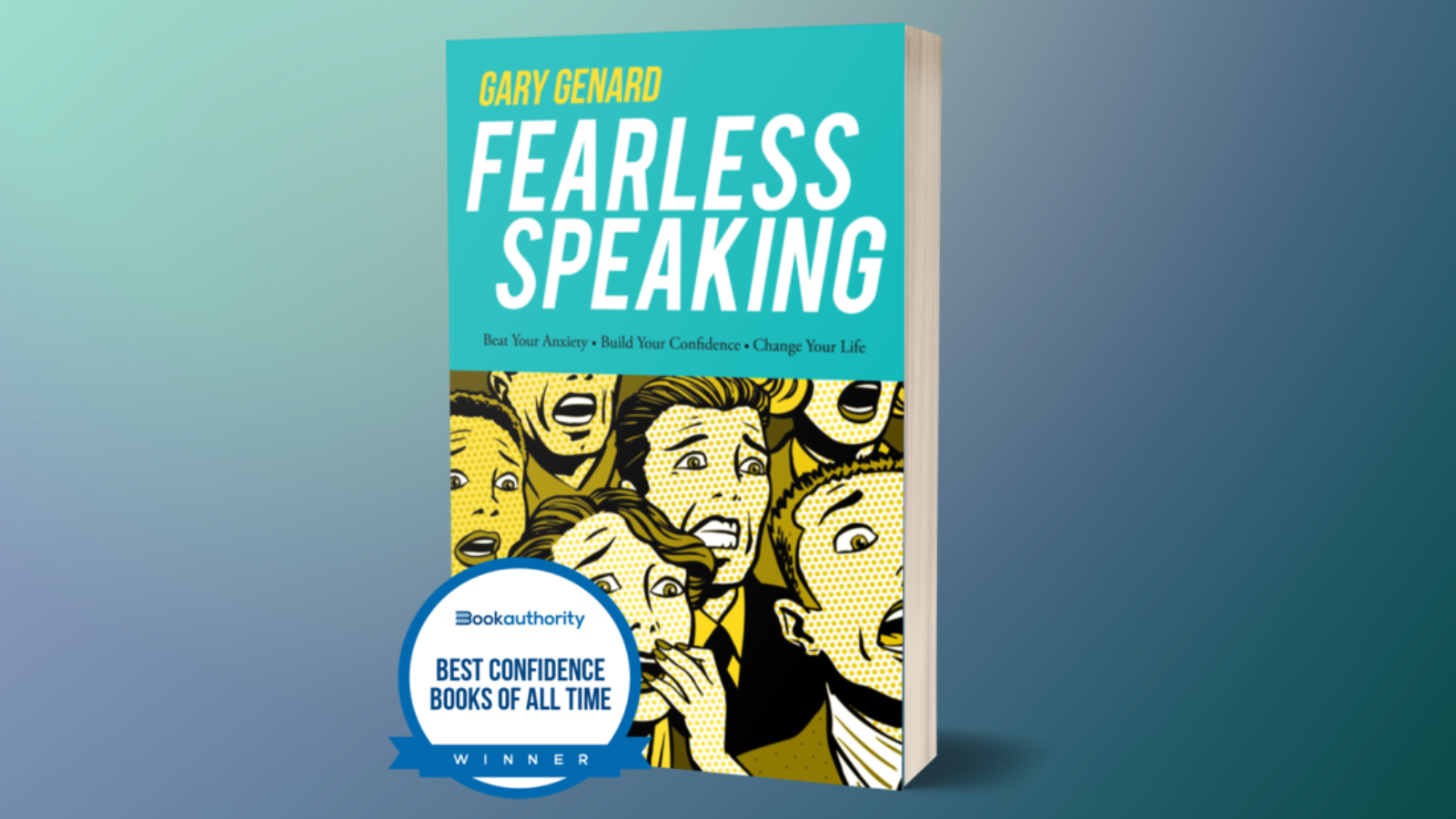 Want to be more effective at presenting in person and virtually? Here's how to build your confidence for meetings and public speaking.
Want to be more effective at presenting in person and virtually? Here's how to build your confidence for meetings and public speaking.
Think of the speakers you admire in business, politics, religion, social settings, or on the TED stage. Are any of them not relaxed or confident?
As speakers, we tend to make a fundamental mistake, thinking that it’s our content that moves audiences, rather than us. So we prepare in the wrong way, focusing on what we’re going to say instead of how we’re going to say it. Consider the following four ways of being effective in meetings and public speaking while improving your level of confidence and focus.
Stage fright? Discover 50 ways to eliminate speaking fear in Fearless Speaking, named in 2019 as "One of the 100 Best Confidence Books of All Time." Click on the image below!
Think In Terms of Your Audience Not Your Content
You speak to audiences to get your message across, naturally. And it's easy to believe that your content is your talk. But it's the story you tell that matters. The "information mindset" makes you go over the material again and again. If you do that, what could go wrong?
Are you too focused (like this) on your content? Be a dynamic speaker instead! Download my Free cheat sheet, “Great Speaking? — It’s About Performance Over Content.
Apart from lack of spontaneity, proceeding that way turns the entire public speaking equation on its head. Once you’ve organized your material, you should start thinking of your audience. That means who they are, what their needs are, what references will resonate with them best, and the action you want them to take as a result of your talk. Addressing yourself to those things rather than content will make your speech more organic, interesting, and persuasive.
Improve Your Comfort Level Speaking in Public
To be that kind of speaker, you need to be comfortable with audiences. And this is an area that too many speakers ignore completely.
As I tell my speech coaching clients: whoever you are and whatever you speak about, you should spend less time thinking about your content, and more time learning how to be relaxed in front of a roomful (or an auditorium full) of people. Paradoxically, the more you stop self-monitoring and consider others' needs, the more comfortable you'll feel in your own skin.
Here's how to become that type of speaker! Download my Free Presenter's Guide, 20 Ways to Connect With An Audience For Lasting Influence..
Make Diaphragmatic Breathing a New Habit
If you’re not familiar with diaphragmatic breathing and the reasons it helps in public speaking, it’s time to learn. Breathing for speech is a more active form of breathing than breathing for life. It involves gaining a fuller reservoir of air to project the voice; and in particular, it requires controlling your exhalation since voice is simply exhaled air acting upon the vocal folds.
Did you know that breathing can boost your confidence? Learn how in my Free resource, "How Breathing Can Help Control Your Fear of Public Speaking." Download it now!
A question clients often ask me is, “When should I breathe this way?” The best answer is, “Always.” Develop the habit of breathing diaphragmatically. Not only will it help you in public speaking. You’ll also more efficiently get oxygen to your heart and your brain. The result is a calmer and more controlled performance, leading directly to more confidence.
For Effective Body Language, Move with Purpose
Now let's bring body language into the picture. Body language is on everyone’s mind when speaking with confidence, usually tied to the question, “What should I do with my hands?”
Here's what you need: the "rules" for effective body language! They're in my Free White Paper, The Body Language Rules: 12 Ways to Be a More Powerful Speaker. Go for it!
But there’s a lot more going on in terms of the physical expressiveness that's needed for public speaking. In fact, a good way to think about body language when you’re speaking is to simply ask yourself, “How can I give physical expression to what I’m saying?”
The body is a fundamental tool of communication, amplifying and making what you say more powerful. And of course, body language works best when it’s closely tied to what you’re saying. Here's some practical help: skills-building exercises for body language in public speaking.
How to Move with Purpose. Learn to use your body so that you move with purpose. For instance, stand in a different part of the room or stage for each main point you make. And think also about where you stand in relation to your audience. Are there times it would be strategically wise to move closer to them? Use this actor's knowledge: “down-center” (or the point closest to your listeners) is the strongest position for your opening and closing.
Finally, take every opportunity that comes your way to speak up in meetings and take the stage in presentations. You'll not only steadily develop more confidence. You'll also more easily be able to access and display your authentic self. And that, after all, is the person the audience came to hear.
You should follow me on Twitter here.

Gary Genard is an actor, author, and expert in public speaking training and overcoming speaking fear. His company, Boston-based The Genard Method offers live 1:1 Zoom executive coaching and corporate group training worldwide. In 2022 for the ninth consecutive year, Gary has been ranked by Global Gurus as One of the World’s Top 30 Communication Professionals. He is the author of the Amazon Best-Seller How to Give a Speech. His second book, Fearless Speaking, was named in 2019 as "One of the 100 Best Confidence Books of All Time." His handbook for presenting in videoconferences, Speaking Virtually offers strategies and tools for developing virtual presence in online meetings. His latest book is Speak for Leadership: An Executive Speech Coach's Secrets for Developing Leadership Presence. Contact Gary here.



